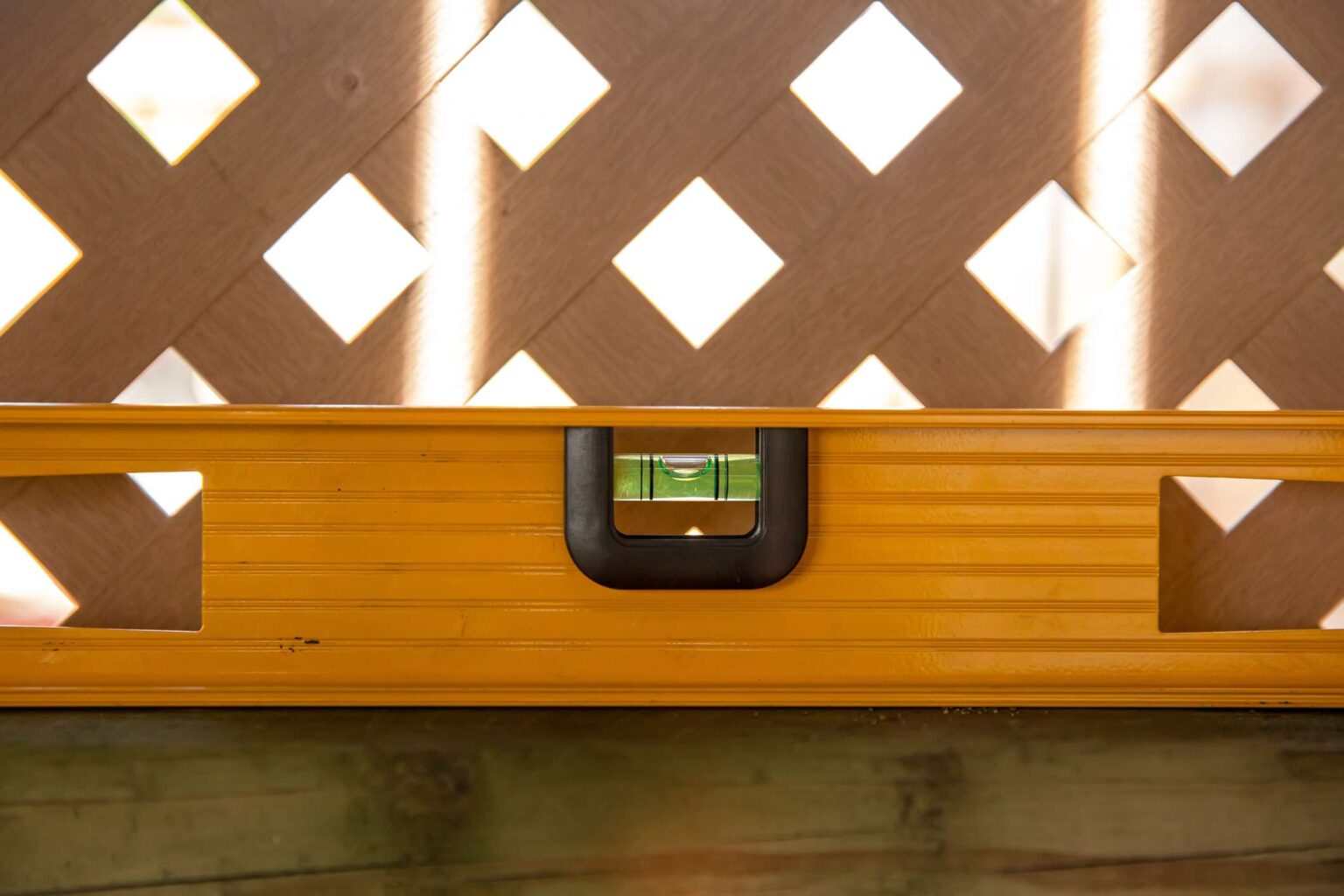A deck is a wonderful addition to any home. A deck takes you above the world. And this elevation is apparent when you view the deck from ground-level and see the large open area below the floorboards. To mask this area and give the deck a clean, unified look, there is a simple solution: lattice. Enclosing the bottom of your deck can keep debris out while adding privacy for usable areas below taller decks. Installing plastic or wood lattice as deck skirting is a low-cost refresh that you’ll be able to finish in just a few hours.
Basics of Installing Deck Lattice
Lattice is available in either plastic or wood. Since both are commonly available in 2-foot and 4-foot heights, you can cover a deck up to that height with a single piece of lattice, add more lattice for higher decks, or cut down the lattice for lower decks.
When installed by a professional, deck skirting typically costs between $2 and $50 per linear foot depending on the type of skirting used. Most lattice is sold in 8-foot long sections. The cost to install lattice under your deck will also be influenced by its height: For example, a panel of 2-foot tall wood lattice costs about $12 to $16, while a 4-foot tall panel costs about $30 to $35. Plastic lattice costs $16 to $20 for a 2-foot tall panel and about $26 to $36 for a 4-foot tall panel.
A few solid attachment points for lattice are found on the deck. On top, the lattice can be fastened to the deck’s rim joist or beam. On the sides, it can be attached to the vertical posts. Because horizontal support is needed for the bottom, you will need to install a two-by-four stringer from post to post.
Plastic Lattice for Decks
Plastic lattice is made of vinyl and comes in 8-foot lengths that are 2 to 4 feet high. Both diamond and square styles are usually available. While white lattice is often in stock at many home centers, a few other colors such as black, green, gray, or brown are available by special order.
Molded as one piece, plastic lattice holds together well when cut. Because the lower area of decks is often in contact with vegetation, vinyl’s durable, water-resistant nature reduces maintenance.
Yet plastic lattice provides fewer style choices than wood lattice. It cannot be stained. Painting plastic lattice is possible to some degree. But you lose the benefit of plastic’s baked-in color by painting it. When plastic lattice has become discolored, the solution is to clean it since it cannot be painted.
Wood Lattice for Decks
-
Stainable to wood tones
-
Paintable
-
Rigid, sturdy
Wood lattice is typically constructed in the factory from cedar or another hardy species of wood. Wood lattice comes in 8-foot lengths that are 2 to 4 feet high.
A chief advantage of wood lattice is that you can control the style. Since the wood comes uncoated, it can be stained, painted, or left to weather on its own. Wood is rigid, so it won’t bend as much as plastic lattice.
Wood lattice, though, does require frequent maintenance by repainting or applying more protective coating. Since wood lattice is made from individual slats, these slats can become detached when you are cutting it.
Lattice Alternatives for Under Decks
Even if you’re not interested in using wood or plastic lattice, there are plenty of ways to add privacy below your deck. Instead of lattice, you can use any of the following options as deck skirting:
- Faux or natural stone
- Metal or plastic decorative screens
- Wood pressure-treated boards (vertical or horizontal)
- Decorative wood panels
- Wire fencing
- Trellis
In any case, your choice of deck skirting should allow for plenty of air ventilation. The buildup of moisture below your deck can quickly lead to wood rot and mold, shortening the life of your deck. Plan for gaps between wood boards, opt for decorative screens with holes designed into the product, or leave spaces between stones to make any of these lattice alternatives effective for years to come.
Codes, Regulations, and Permits
Building a deck often requires a permit in many areas. Installing lattice under a deck may not require a permit, but you should always check with your building department for confirmation.
Safety Considerations
Always wear eye and hearing protection when cutting or fastening plastic or wood lattice to a deck.
Read the full article here

